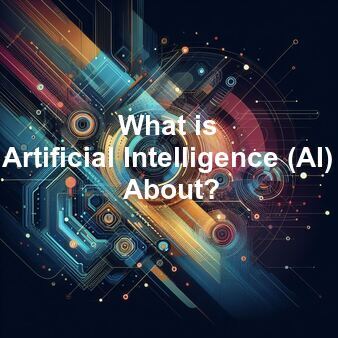Demystifying Artificial Intelligence (AI): A Comprehensive Overview
Artificial Intelligence (AI) is a transformative field that intersects computer science, mathematics, and cognitive sciences to create intelligent machines capable of mimicking human-like cognitive functions. In this comprehensive overview, we’ll unravel the essence of AI and explore its various dimensions.

I. Understanding Artificial Intelligence: The Basics
1. Definition of AI:
AI refers to the development of computer systems that can perform tasks requiring human intelligence. These tasks encompass learning, reasoning, problem-solving, perception, language understanding, and even autonomous decision-making.
2. Types of AI:
Narrow or Weak AI: Specialized in performing a specific task, like virtual assistants.
General or Strong AI: Possesses the ability to understand, learn, and apply knowledge across diverse domains, comparable to human intelligence.
II. Key Components of Artificial Intelligence
1. Machine Learning (ML):
ML is a subset of AI that enables machines to learn from data without explicit programming. Algorithms improve their performance over time as they are exposed to more data.
2. Natural Language Processing (NLP):
NLP focuses on enabling machines to comprehend, interpret, and generate human language. It plays a vital role in applications like chatbots and language translation.
3. Computer Vision:
Computer vision empowers machines to interpret and make decisions based on visual data. This technology is fundamental in facial recognition, image analysis, and autonomous vehicles.
III. Applications of Artificial Intelligence
1. Healthcare:
AI aids in diagnostics, personalized medicine, and drug discovery, enhancing the efficiency and accuracy of medical processes.
2. Finance:
In the financial sector, AI is utilized for fraud detection, algorithmic trading, and customer service chatbots.
3. Education:
AI-driven educational tools personalize learning experiences, adapting to individual student needs and providing targeted support.
IV. Challenges and Ethical Considerations
1. Bias and Fairness:
AI systems can perpetuate biases present in training data, necessitating efforts to ensure fairness and prevent discrimination.
2. Transparency:
The opacity of some AI algorithms raises concerns about accountability and the need for transparent decision-making processes.
V. The Future of AI: Trends and Possibilities
1. AI in Business:
Integration of AI in business processes, from customer service to supply chain management, is expected to become more widespread.
2. AI and Creativity:
AI is increasingly contributing to creative fields, assisting in content creation, art, and music composition.
VI. Conclusion: Navigating the AI Landscape
Artificial Intelligence stands at the forefront of technological advancement, reshaping industries and influencing various aspects of our daily lives. As we delve deeper into the possibilities AI presents, it is essential to navigate its development responsibly, addressing challenges and maximizing its potential for the betterment of society.
